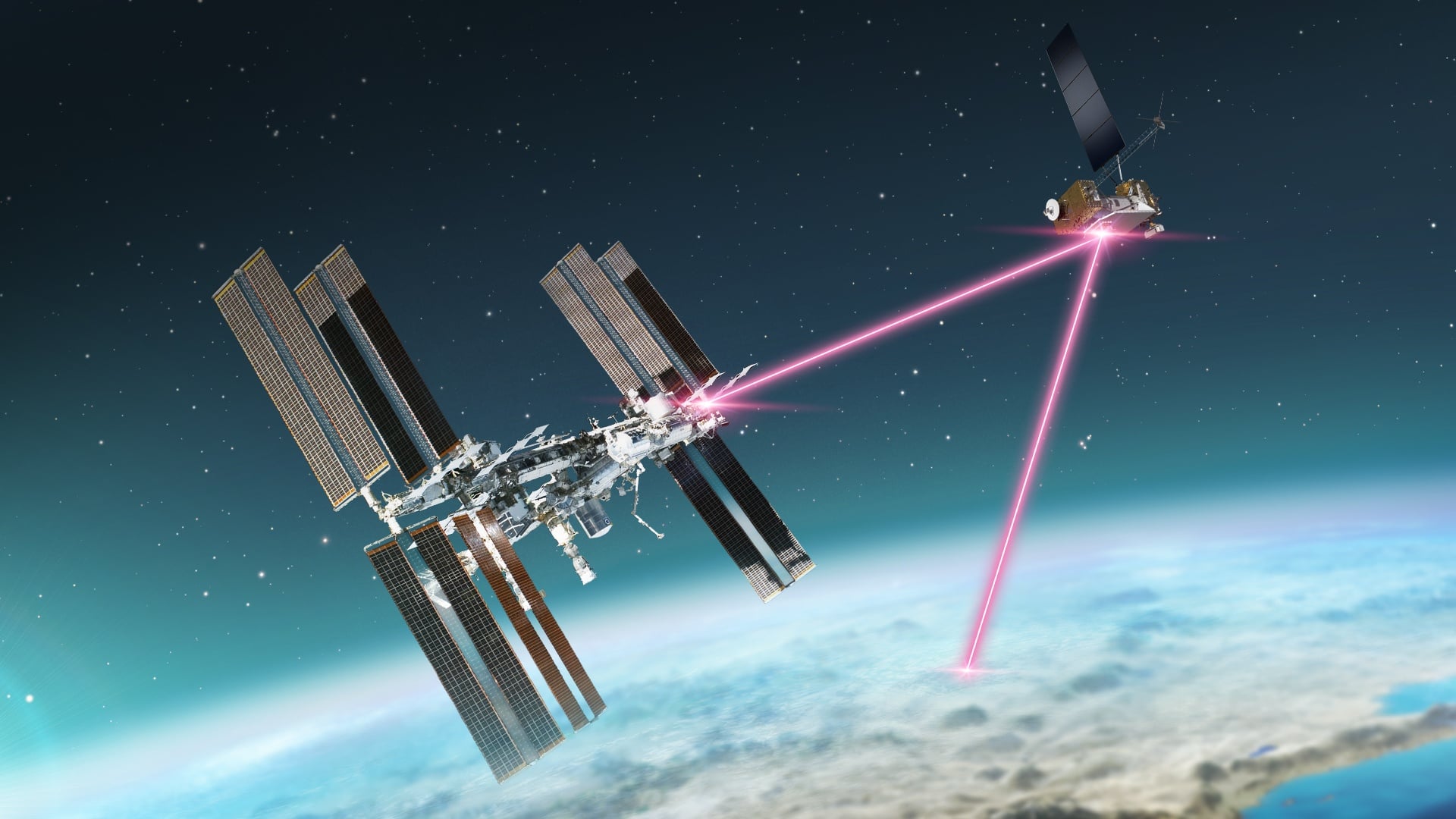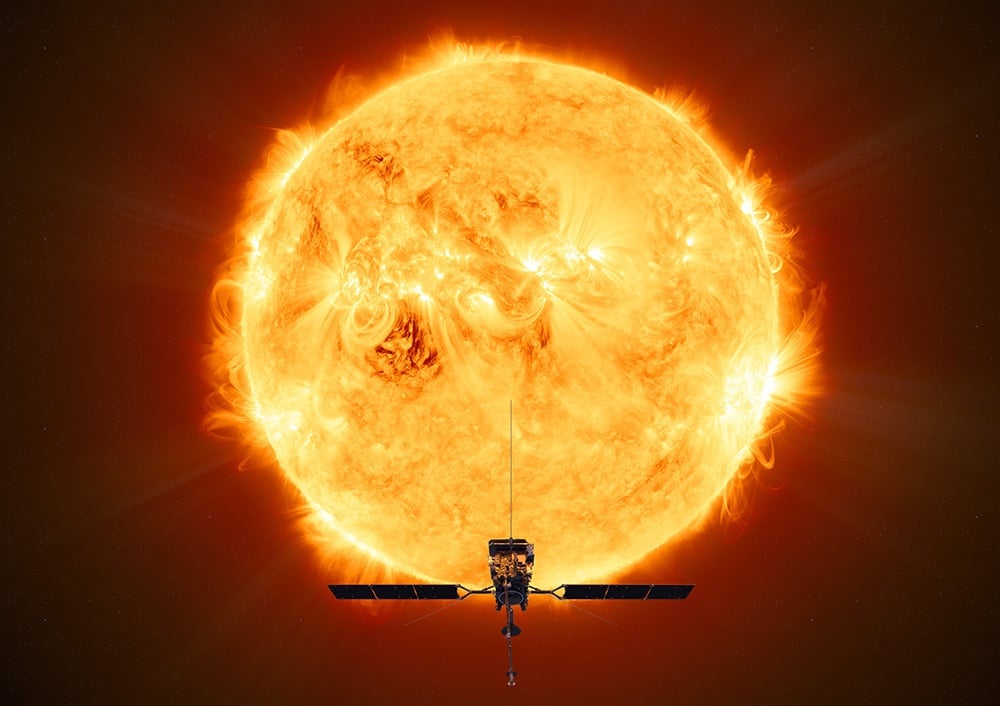
Catch periodic cosmic interloper 103P Hartley while you can.
Continue reading

Continue reading

Continue reading

A team of astronomers have developed a new technique that relies on Baryon Acoustic Oscillations to measure cosmic distances.
Continue reading

Continue reading

Galaxies are surrounded by magnetic field lines, spanning tens of thousands of light-years. These magnetic fields have previously been measured surrounding only the closest galaxies. Still, astronomers have made the map of a galaxy seen just a few billion years after the Big Bang. Astronomers discovered with ALMA, searching dust grains in the galaxy that align with the nearby magnetic fields. The light they emit becomes polarized, which can then be turned into magnetic field maps.
Continue reading

China has released artist renditions of the spacecraft and lander module that will send the first taikonauts to the Moon.
Continue reading

Continue reading

Continue reading

Continue reading

NASA is upgrading the ISS communication system with the first end-to-end laser relay system.
Continue reading

Continue reading

Continue reading

All organisms communicate information with their cells using signaling molecules. Add up all these communications, and it's the equivalent of 10^24 bits per second, which is an incomprehensibly large amount. Humanity's digital communication only amounts to 10^15 bits per second, nine orders of magnitude less. However, humanity's information transmission is growing exponentially, and according to a new study, it should catch up within 90 years. These estimates could help astronomers search for technological civilizations more advanced than us.
Continue reading

A gap in astronomical knowledge is Cosmic Dawn, a time when the first stars in the Universe formed, ending the cosmological dark ages. If there was dark matter at this early time, its decay might have heated up the intergalactic medium, sending out a signal that could be detectable today. A new paper suggests that the newly built Hydrogen Epoch of Reionization Array (HERA) telescope could measure this dark matter decay with 1,000 hours of observation or constrain its presence by three orders of magnitude.
Continue reading

Continue reading

Astronomers have measured the Universe's expansion rate and found that various methods don't agree, and their error bars don't overlap. This is called the "Hubble Tension" or the "Crisis in Cosmology." Either the measurements are wrong, or new physics is waiting to be discovered. Cosmologists have proposed a period of rapid expansion early on in the Universe called "Early Dark Energy." Still, a recent paper suggests one rapid expansion event wouldn't explain other observations about the Universe. It's probably a combination of factors.
Continue reading

Continue reading

In 1987, a supernova suddenly appeared in the Large Magellanic Cloud and was studied by astronomers worldwide. Although the detonating star was 165,000 light-years away, this was still the closest supernova seen in centuries. Astronomers have continued to study the expanding debris cloud over the decades, and now JWST has joined the effort, revealing new features never before seen with other observatories. The central core is so dense with gas and dust that its central neutron star remnant is still hidden, even to JWST.
Continue reading

Continue reading

The Event Horizon Telescope is a collection of radio telescopes across the globe that simultaneously gathered data about the Milky Way's supermassive black hole, acting as a single telescope the size of planet Earth. This revealed the galaxy's heart in unprecedented detail, helping to confirm the black hole's event horizon and prove some of Einstein's predictions about General Relativity. But if those observations happened to contain any signals from pulsars in the area, it would allow for even more precise measurements, as if there were atomic clocks orbiting Sgr A*.
Continue reading

Continue reading

Continue reading

Continue reading

JWST is the most powerful instrument astronomers have to study the atmospheres of exoplanets, looking for trace gases that might indicate life on another world. What if Earth was an exoplanet orbiting a nearby star? What could JWST learn about our planet? In a new study, astronomers took observations of Earth from various spacecraft and then simulated what JWST would see if it got our home planet in the crosshairs. The telescope could detect various chemicals, from water vapor to methane, but it could also sense the presence of chlorofluorocarbons resulting from our industrial infrastructure.
Continue reading

Continue reading

Continue reading

Continue reading

Continue reading

Although humans have only sent a couple of tentative signals into space, many are concerned about the risks. Should we let alien civilizations know we're here? According to a new paper, humanity has already been broadcasting its existence for thousands of years, and civilizations with advanced enough technology should be able to observe us. It's science fiction to us, but megastructure space telescopes could have baselines of millions of kilometers, powerful enough to detect structures on the surface of Earth from thousands of light-years away.
Continue reading

Continue reading

Continue reading

All current and planned gravitational wave observatories are located in the northern hemisphere, in the US, India, Europe, and Japan. Even the next-generation observatories like Cosmic Explorer 40-km and the Einstein Telescope will be in the north. But a telescope in the southern hemisphere would provide a much larger baseline, allowing the detection of fainter gravitational waves. A new paper makes the case for building an observatory south of the equator.
Continue reading

Continue reading

Continue reading

Continue reading

Thanks to data obtained by Webb, astronomers have confirmed that MACS0647-star-1 is the second farthest star observed to date.
Continue reading

Actively feeding supermassive black holes are known as quasars, and they can outshine all the stars of their host galaxy. Part of their brightness comes from the accretion disk surrounding the black hole, but they're hard to image directly because quasars are so far away. New data from one of the world's largest telescopes has managed this feat, detecting near-infrared emission lines that mark significant regions in the accretion disk in a quasar.
Continue reading

Continue reading

Continue reading

Continue reading

Continue reading

Astronomers have found supermassive black holes in the centers of most galaxies. To get the black holes we see today, they must have been feeding in the past, packing on the mass to grow so big. But, a recent survey with JWST failed to turn up as many active galactic nuclei as astronomers expected. This just deepens the mystery. How did mature galaxies like the Milky Way get their black holes if they didn't go through this feeding period?
Continue reading

Continue reading

After over a decade of observations of pulsars, astronomers could finally tease out the gravitational wave background of the Universe, the combined signal from merging supermassive black holes. But it was just the general presence of mergers, not specific events. A new paper proposes that the same pulsars could next be used to detect the gravitational waves from individual merging supermassive black holes. The more nearby pulsars astronomers can find, the more accurate their measurements will become.
Continue reading

A pair of X-ray telescopes have observed the messy aftermath of a star that came too close to a supermassive black hole 290 million light-years away. It's believed that the star had three times the mass of the Sun, so this was one of the largest tidal disruption events ever seen. Although the black hole consumed some of the star, most of its guts were thrown into the surrounding space, polluting the region with the chemicals that allowed astronomers to estimate its stellar mass.
Continue reading

Continue reading

Continue reading

Using the ESO's VLT, an international team of observers was able to study Neptune's Great Dark Spot with a ground-based telescope for the first time.
Continue reading

Continue reading


















































